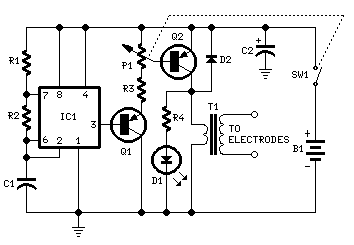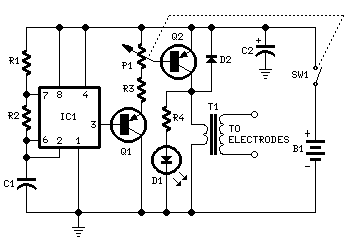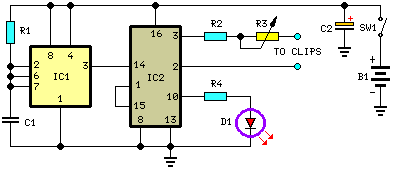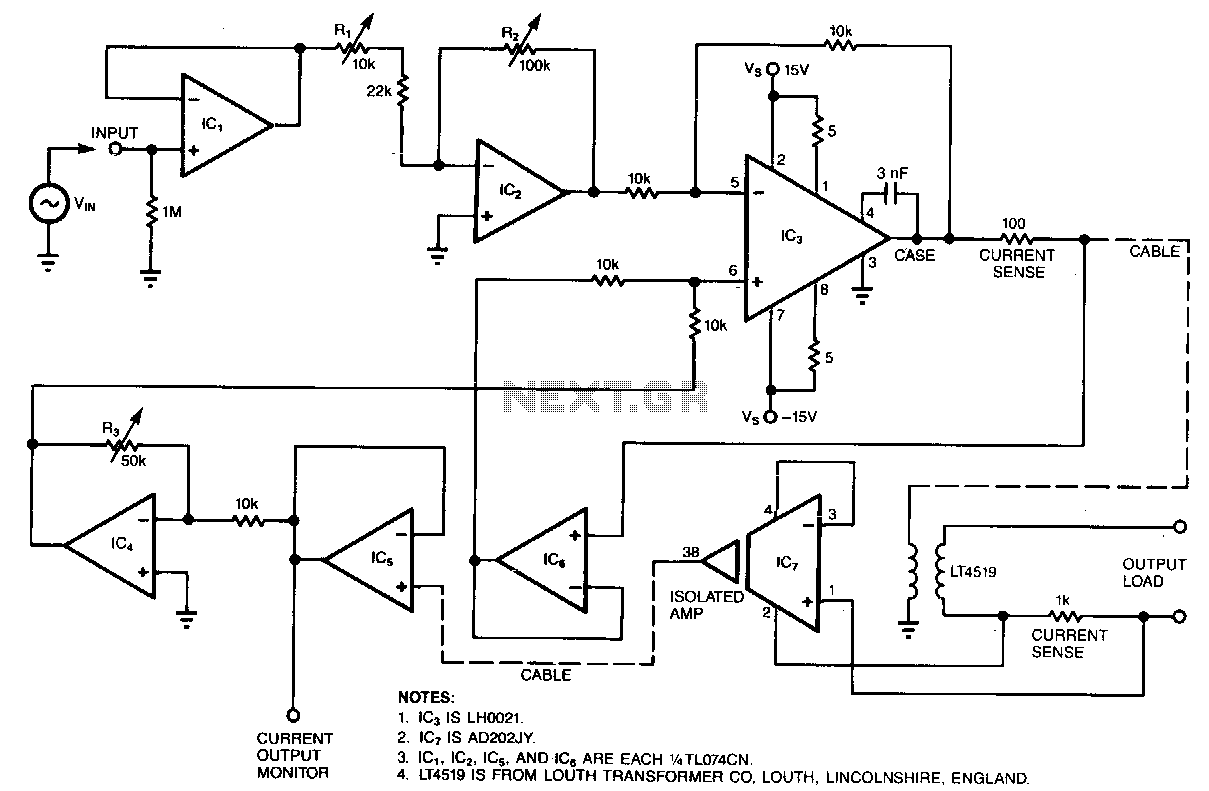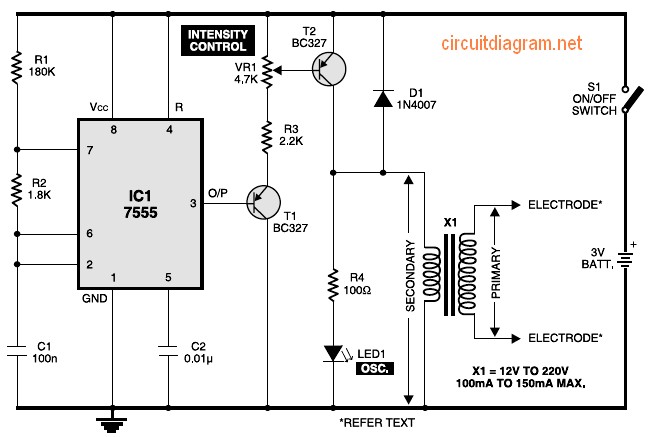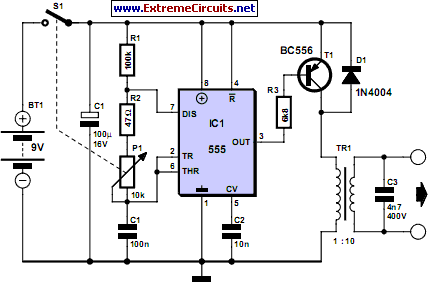
Cranial Electrotherapy Stimulator
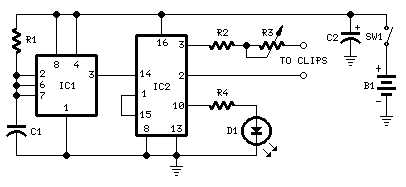
Owing to the recent launching in Europe of Cranial Electrotherapy Stimulation (CES) portable sets, we have been electronically stimulated in designing a similar circuit for the sake of hobbyists. CES is the most popular technique for electrically boosting brain power and has long been prescribed by doctors, mainly in the USA, for therapeutic reasons, including the treatment of anxiety, depression, insomnia, and chemical dependency.
The circuit for a Cranial Electrotherapy Stimulation (CES) device typically consists of several key components that work together to deliver safe and effective electrical stimulation to the cranial region. The design generally includes a microcontroller, which acts as the central processing unit, controlling the timing and intensity of the electrical pulses.
Power supply components are essential, with a battery or a regulated power source providing the required voltage. The output stage usually comprises an operational amplifier configured to generate a precise waveform, often a square or triangular wave, which is critical for effective stimulation.
Electrodes are another critical element, usually made of conductive materials such as silver or gold-plated contacts, designed to ensure good skin contact and minimize impedance. The positioning of these electrodes is important for targeting specific brain regions, and they are often placed on the earlobes or temples.
Safety features are paramount in the design of CES devices. Current limiting resistors or feedback mechanisms are included to prevent excessive current flow, ensuring user safety. Additionally, the circuit may incorporate a microcontroller-based monitoring system that provides real-time feedback on the device's performance and alerts the user to any irregularities.
Furthermore, the device may include a user interface consisting of buttons or a touchscreen display, allowing users to adjust settings such as stimulation frequency and duration. This interface is often powered by a simple low-power microcontroller, which can also manage battery life and provide visual indicators for operational status.
In summary, a CES circuit for hobbyists integrates various electronic components to create a safe, effective, and user-friendly device for cranial electrotherapy, aimed at enhancing cognitive function and alleviating certain psychological conditions.Owing to the recent launching in Europe of Cranial Electrotherapy Stimulation (CES) portable sets, we have been "Electronically Stimulated" in designing a similar circuit for the sake of Hobbyists. CES is the most popular technique for electrically boosting brain power, and has long been prescribed by doctors, mainly in the USA, for therapeutic reasons, including the treatment of anxiety, depression, insomnia, and chemical dependency.
🔗 External reference
The circuit for a Cranial Electrotherapy Stimulation (CES) device typically consists of several key components that work together to deliver safe and effective electrical stimulation to the cranial region. The design generally includes a microcontroller, which acts as the central processing unit, controlling the timing and intensity of the electrical pulses.
Power supply components are essential, with a battery or a regulated power source providing the required voltage. The output stage usually comprises an operational amplifier configured to generate a precise waveform, often a square or triangular wave, which is critical for effective stimulation.
Electrodes are another critical element, usually made of conductive materials such as silver or gold-plated contacts, designed to ensure good skin contact and minimize impedance. The positioning of these electrodes is important for targeting specific brain regions, and they are often placed on the earlobes or temples.
Safety features are paramount in the design of CES devices. Current limiting resistors or feedback mechanisms are included to prevent excessive current flow, ensuring user safety. Additionally, the circuit may incorporate a microcontroller-based monitoring system that provides real-time feedback on the device's performance and alerts the user to any irregularities.
Furthermore, the device may include a user interface consisting of buttons or a touchscreen display, allowing users to adjust settings such as stimulation frequency and duration. This interface is often powered by a simple low-power microcontroller, which can also manage battery life and provide visual indicators for operational status.
In summary, a CES circuit for hobbyists integrates various electronic components to create a safe, effective, and user-friendly device for cranial electrotherapy, aimed at enhancing cognitive function and alleviating certain psychological conditions.Owing to the recent launching in Europe of Cranial Electrotherapy Stimulation (CES) portable sets, we have been "Electronically Stimulated" in designing a similar circuit for the sake of Hobbyists. CES is the most popular technique for electrically boosting brain power, and has long been prescribed by doctors, mainly in the USA, for therapeutic reasons, including the treatment of anxiety, depression, insomnia, and chemical dependency.
🔗 External reference
